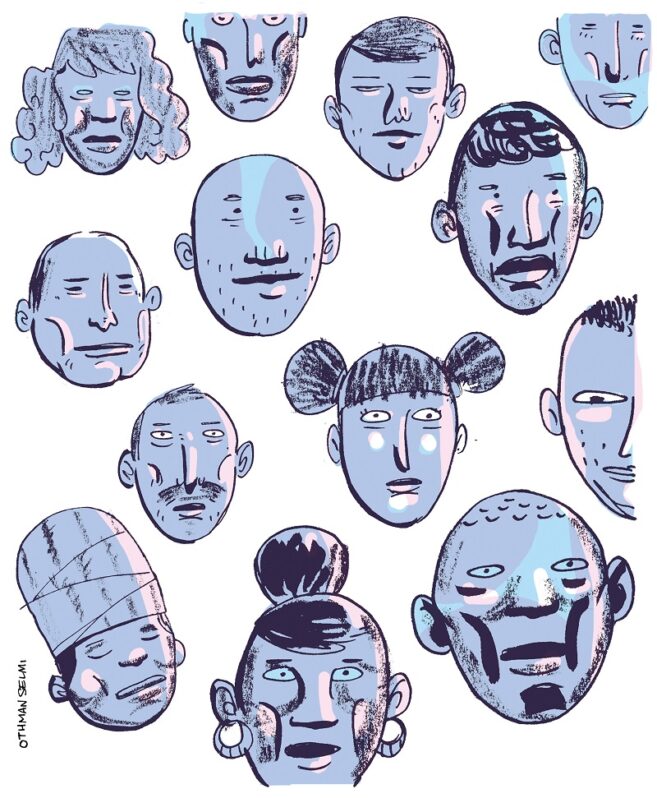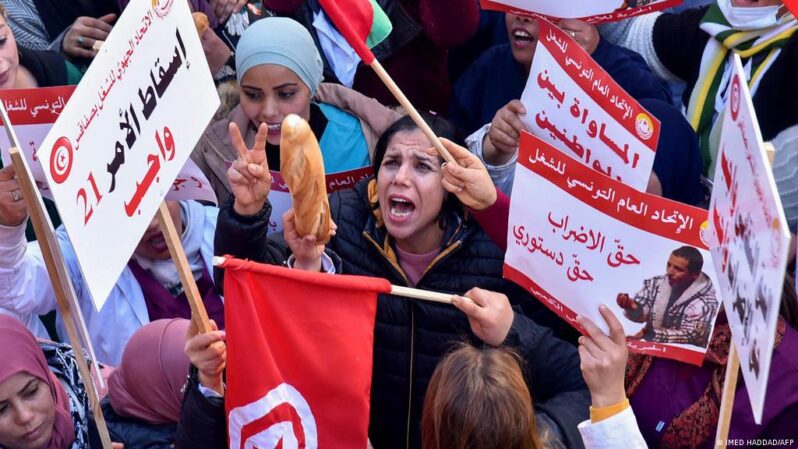Abolition of Slavery in Tunisia: Interview with Ismael M. Montana

The question of slavery during Ottoman times and in the Arab region has become entangled with contemporary debates around anti-Black racism in North America. When applied to the Middle East, this debate has often been laced with Arabophobic or Islamophobic undertones. Consequently, histories of Afro-Arab co-existence and solidarity are often marginalized. Moreover, analysis of anti-Black racism or histories is sometimes conceptualized through the lens of racial histories in the United States rather than the historical specificities of the Middle East. Categories of skin-based racial identities in the West are then uncritically transposed on their counterparts in the Arab world. These orientalist readings are then internalized by Arab and Middle Eastern scholars and intellectuals examining the histories of their societies in relation to the question of race. In such a contemporary context, is it possible to produce a history of slavery in the region that avoids the tropes of Orientalist North American historiographies without dismissing serious questions of racialized oppression in the region? (Editor)
Legal Agenda (LA): Your research interests center on the social and economic history of slavery in the Mediterranean Islamic world in the 18th and 19th centuries. Why did you choose to explore the Tunisian case, particularly through your exciting and stimulating book The Abolition of Slavery in Ottoman Tunisia (University Press of Florida, 2013), a topic that remains a taboo in our society?
Ismael Montana: It is an honor and a privilege to have my work acknowledged by an important magazine such as The Legal Agenda and I want to begin by thanking you for your interest in my research. To answer your question, my interest in this subject began about three decades ago when I was an undergraduate student at Zaytuna University studying Islamic Civilization during the late 1990s. At the time, one of my teachers, Néji Jalloul, who taught Islamic architecture and who later became a politician, used to take his students on field trips to study historical sites in the South of Tunisia. It was during these trips that I got exposed to a significant presence of Black Tunisians of Sub-Saharan African descent in the country. I was intrigued by the similarities of their music to West African music, and I quickly developed an interest to study their history as a whole. After I completed my studies in Tunisia and continued my doctoral degree in history at York University (Toronto, Canada), I decided to study Black Tunisians as a diasporic community in Tunisia. But as anyone who knows the topography of the Black Tunisian population would attest, Black Tunisians are not a monolithic group. I was more interested in the Black population affiliated with the Bori/Stambali practice. To understand the history of this particular group, I had to study the economic and political structures that resulted in their presence in Tunisia, especially those who were brought to Tunisia at the peak of the caravan slave trade during the 18th and 19th centuries. The result of my fascination with this group has been plentiful, including the publication of this book on The Abolition of Slavery in Ottoman Tunisia, which documents the history, structure and organization of the caravan slave trade, the prohibition of the caravan slave trade, and the abolition of slavery all under Ahmad Mushir al-Bey (1835-1855).
LA: You state in the introduction to your book that archives are a real challenge for historians researching the trans-Saharan slave trade compared to those who research the Atlantic slave trade. How did you manage to ward off this difficulty and from which archive did you carry out your work?
Montana: Compared to the Atlantic slave trade, which yielded ship log records allowing historians to gain closer estimates of the number of enslaved Africans who embarked and disembarked on the ships conducting the slave voyages, the operation of the caravan slave trade in enslaved Africans across the Sahara differed greatly. The few available records mostly were on the transaction of commercial goods. Rarely did they keep records of the number of enslaved individuals traded. Unlike the ship logs in the trans-Atlantic context, it has been impossible for historians studying the trans-Saharan slave trade to attain meaningful estimates such as the ones their counterparts in the trans-Atlantic slave trade have been able to.
Between the early 1830s and through the end of that century, several European travelers and abolitionists’ accounts did allude to rough estimates of enslaved individuals carried by large or small caravans, except that their estimates were often exaggerated to serve their motives. What this means is that historians must treat these types of accounts with extreme care, as I tried to do in my book. To account for the inadequate available quantitative data on the slave trade requires an informed understanding of the broader historical context in which the European travelers and abolitionists’ accounts were generated. My research and analytical method to overcome this limitation was the employment of time series analysis, which involved plotting the numbers of the slave trade derived from these descriptive accounts against the known historical events that may have been behind the decreases or increases in the changing patterns of the caravan slave trade over the period of time studied.
LA: Could you present to our readers the main dynamics and the changing patterns of the slave trade in Tunisia: its routes and structure, the role of the Ghadames traders, and how it was structured around an economic context dominated by European capitalism in the western Mediterranean?
Montana: The main dynamic behind the changing patterns of the slave trade lay principally in the demand and supply factors spearheaded, on the one hand, by Tunisian economic reforms and, on the other hand, by the political instability engendered by the Islamic jihad movements in the western and central Sudan regions of West Africa at the time.
The Islamic jihad movement in West Africa occurred mostly during the late 18th and lasted much of the 19th century. In the central Sudan region it was led by Uthman Ibn Fodio who established the Sokoto Caliphate خلافة السوكوتو in what is northern Nigeria today. During the course of Ibn Fodio’s jihad movement, the jihad leadership enslaved non-Muslim communities who were practicing indigenous African religions such as the Hausa indigenous religious practice known as Bori or Stambali in Tunisia. In the Sokoto Caliphate, the jihad leadership condemned the Bori practitioners as maguzawa and considered them eligible for enslavement. Through this religious justification, thousands from the Bori communities were enslaved annually and sold as slaves to the trans-Saharan merchants.
The jihad movements did not introduce slavery in West Africa, but they did use religion to justify enslavement and in so doing contributed significantly to the expansion of enslavement activities in West Africa during the late 18th and 19th centuries.
On the Tunisian side, the economic reforms policy that Hammuda Pasha (1782-1814) instituted resulted in the expansion of Tunisian foreign trade across the Mediterranean, the Levant, and the West African regions (known then as western and central Sudan). Rejuvenated by these reforms and the expansion of European commercial goods in Tunisia, Ghadames merchants who had been conducting the caravan slave trade for almost a century seized on the favorable commercial conditions provided by Hammuda Pasha’s economic reforms by expanding their trade activities more than any other period before. The results were very clear: as the Ghadames merchant reached deep into Kano, Katsina, where the Islamic jihad movement caused mass enslavement of people who the jihad leaders condemned as infidels, the scope of the caravan slave trade expanded exponentially. As the trade expanded, the Ghadames merchants established trade agents in the western and central Sudan region.
The number of slaves entering Tunisia fluctuated according to security conditions or the stability or instability along the caravan trade’s networks. In the period between the 1780s and the early 1840s, an average of 1,000 to 1,200 slaves including eunuchs were brought to Tunisia. While some of these enslaved individuals were sold in the South of Tunisian for employment mostly in the agricultural sector, the vast majority of them were brought to and sold in Souk el-Berka which is located in the center of Medina in Tunis. Unlike in the South of Tunisia, those sold in Tunis worked predominantly in domestic households as attendants, cooks, nannies, gardeners and other occupations. Enslaved male Africans were even used as bawwaba or palace guards and in the military in Sousse as well, especially during the reign of Ahmad Bey.
As for the eunuchs, they were expensive to procure and the few that were brought to Tunisia were destined for the Husaynid ruling family for use in their harems. Some of the eunuchs were sent by beys to Istanbul as annual gifts to the Ottoman Sultan by Husaynid ruling elites.
This boom in the caravan slave trade that began in the 1780s continued unabated until 1842, when Ahmad Bey (1835-1855) officially banned the Ghadames merchants from bringing and selling slaves in Tunisian territories.
LA: You argue in your book that the abolition process of slavery in Tunisia was shaped by “the political disequilibrium arising from the French conquest of Algeria in 1830” and the fundamental reason refers more to, “The urgency of safeguarding the independence of Tunisia, more than efforts at selective ‘modernization’ or ‘reform’”. Could you tell us more?
Montana: Certainly. While there is not a sheer doubt in mind surrounding Ahmad Bey’s personal and humanitarian motives as a progressive ruler for banning the slave trade and ultimately abolishing it in 1846, the context in which abolition occurred served as the catalyst that dictated his decision to abolish the slave trade. As I mentioned in the book, soon after the French occupied the Regency of Algiers in 1830, the Ottoman Empire – which feared it might lose its influence over the Regencies of Tripoli and Tunis – responded by asserting its control in Tripoli. Tunisia was caught between the power politics of these imperial powers: France, the Ottoman Empire, and Great Britain. This led Ahmad Bey to cozy up to Great Britain to ward off the threats from France or the Ottoman Empire. In the context of this political disequilibrium in the western Mediterranean, the British and Foreign Anti-Slavery Society – which had been exerting futile attempts on the Ottoman Sultan and Egyptian rulers – saw the relationship between Tunisia and Great Britain as a perfect opportunity to induce Ahmad Bey to abolish the slave trade. Thus, Ahmad Bey’s pragmatic calculation to safeguard the integrity of Tunisia against France and the Ottoman Empire’s encroachment was a key factor that influenced his anti-slavery program.
LA: How do you react as a historian who has lived and worked in Tunisia to the rise of anti-Black racism and ongoing anti-Sub-Saharan institutional violence?
Montana: Quite frankly, the rise of anti-Blackness and the recent violence against Sub-Saharan Africans in Tunisia has been very troubling, to say the least. As someone who lived in Tunisia and has many Tunisian friends I view as my extended family, I have been following the developments of this situation with utmost concern. For one, I find it to be antithetical to Tunisia’s image as the first country in the Muslim world to abolish slavery during the modern period. Also, while it is not a secret that Black Tunisians continue to be marginalized in Tunisian society, the unfortunate statement Tunisian President Kais Saied made this past February, inaccurately framing the presence of Sub-Saharan Africans as an ‘invasion’ and a conspiracy to change the demographic makeup of his country, contributed to the climate of anti-Blackness and anti-Sub-Saharan Africans in Tunisia.
As the Black Lives Matter Movement has made abundantly clear, acknowledging the legacy of the African slave trades can offer a better solution to race relations, racism, and problems of citizenship – not just in the trans-Atlantic context but also in North Africa and the larger Arab World. Despite Tunisia setting the earliest example in the abolition of slavery in the Muslim world, more needs to be done to combat the legacy of slavery which continues to play a big role in the current prevailing sentiments of anti-Blackness in Tunisia.



